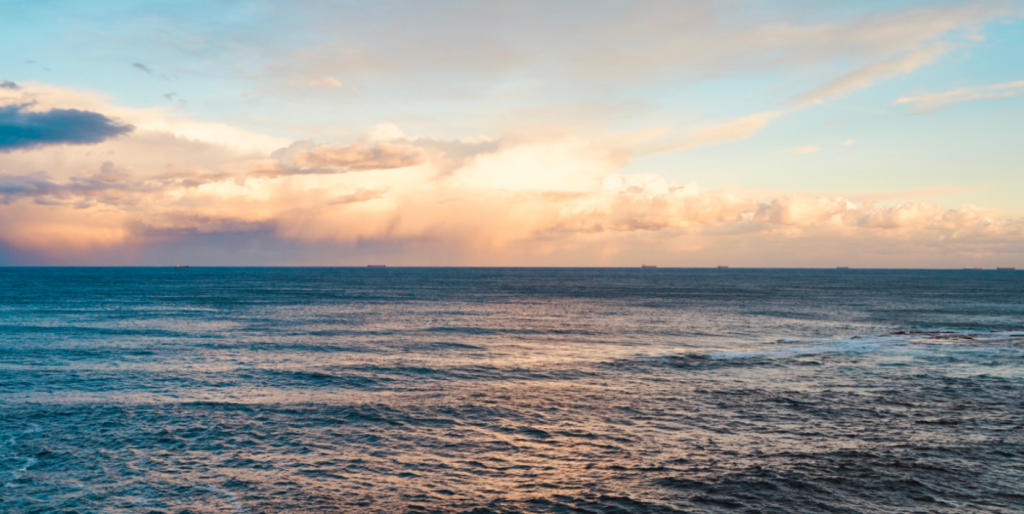
The scintillating expanse of the open ocean is an incredible marvel of nature and an infinite source of intrigue. Not only does the ocean make up more than 70% of the Earth's surface, it's also home to 50 - 80% of all life on our planet.
Whether you're motivated by curiosity or moved by the increasing pressures of the climate crisis, the beauty, inspiration and importance of the ocean is something we can all admire and must always respect.
At Sea Chest, we've compiled some of the most popular and frequently asked questions about our oceans. From the geography of our seas to underwater wildlife and fascinating ocean phenomena, discover more with us...
What Are The Seven Seas?
A term that dates back to ancient history, The Seven Seas has its origins in nautical trade routes, far flung oceans and distant waters.
As time has passed the seven seas have encompassed different regions of water, but now you could apply the 7 seas to the North Atlantic, South Atlantic, North Pacific, South Pacific, Indian, Southern Oceans and the Arctic Oceans.
The five main oceans, more commonly referred to, are the Atlantic, Pacific, Indian, Southern and Arctic.
What Is The Largest Ocean In The World?
The Pacific Ocean is the largest ocean in the world, covering around 63 million square miles. It's almost twice the size of the Atlantic and is one of the largest and deepest world ocean basins, containing over half of the open water on Earth.
What Do Sea Urchins Eat?
Sea urchins aren't picky about what they eat and will typically consume everything from algae, plankton, kelp and periwinkles. Occasionally they will eat mussels and barnacles.
What Is The World's Smallest Ocean?
Of the main global oceans, the Arctic Ocean is the smallest. The area spans around 5.4 million to 6.1 million square miles.
What Is The Dead Sea?
Located between Israel and Jordan in southwestern Asia, the Dead Sea is one of the saltiest waters in the world, and due to its high salinity, is toxic to plants and animals. Although referred to as a sea, it's actually a lake that exists at the lowest land-based area on Earth at around 430 feet below sea level.
What Is Seafoam?
This is something that you've probably observed already when walking along the shoreline. Foaming seas is a phenomenon caused by seawater and organic matter, dead algae, pollutants, detergents and other chemicals that are found in the ocean reacting with trapped air. The natural stirring and movement causes a foaming reaction to take place, although most of the time it isn't harmful to humans and is a natural occurrence in the marine eco-system.
What Is The Deepest Ocean In The World?
The Mariana Trench, located in the western area of the Pacific Ocean, is the deepest place on Earth. The maximum recorded depth is 10,984 metres. Hypothetically, if Mount Everest was dropped into the trench, its peak would still be over a mile underwater.
What Makes The Ocean Salty?
Put simply, the saline content of the ocean is principally caused by slightly acidic rain (the precipitation made acidic by coming into contact with carbon dioxide in the air) that washes the mineral ions and salty deposits found on land rocks into the water. Although sea water tastes intensely salty, the actual salt content is only about 3.5%
What Is The Coldest Ocean?
The Arctic Ocean is the coldest ocean on Earth. Its average temperature is approximately -2°C or 28°F.
What Is The Red Sea?
The Red Sea is one of the saltiest oceans on Earth and is an inlet of the Indian Ocean. Although recognised for its biblical connotations, the name origin possibly refers to the presence of a cyanobacteria algae called Trichodesmium erythraeum, which turns the normally blue-green water a reddish-brown. In instances when the sea blooms with this algae, it may take on a reddish colour, however, the colour is not as intense or expansive as you would believe.